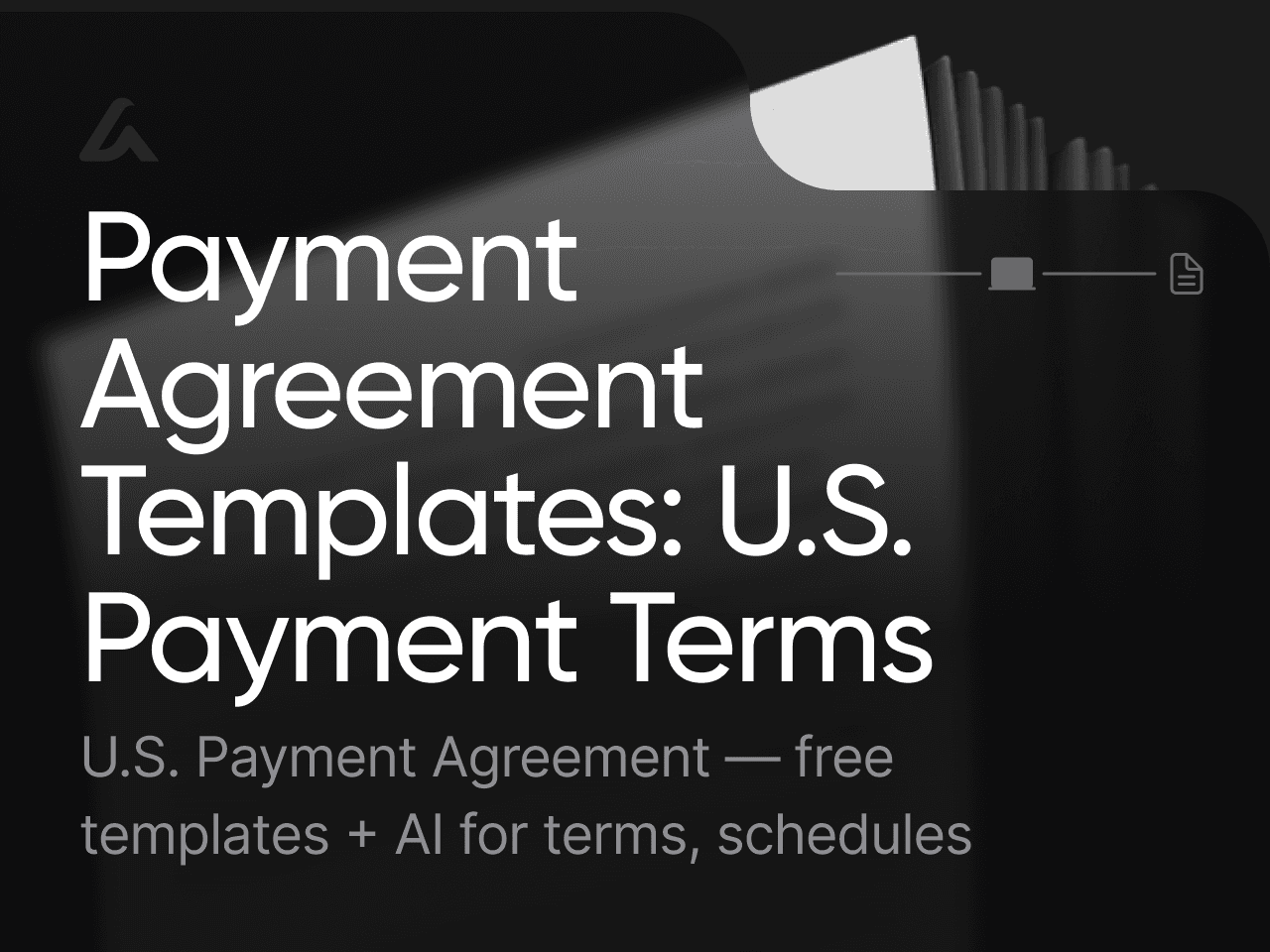AI Lawyer Blog
Publishing Agreement Template (Free Download) — Full Guide

Greg Mitchell | Legal consultant at AI Lawyer
3
Writing a book takes time, discipline, and vision. But publishing it without a proper agreement? That can unravel everything.
Without a publishing agreement, authors risk:
Losing ownership of their work
Missing out on royalty payments
Getting tied into unfair or unclear terms
Facing legal disputes, they didn’t see coming.
That’s why we created a free, legally-sound publishing agreement template you can download right now. Prefer something tailored? You can also generate a custom version with our AI-powered tool designed specifically for authors, indie publishers, and creatives who want protection without the legal guesswork.
For a more comprehensive understanding of Publishing Agreements — including their legal nuances, variations across jurisdictions, and practical applications — we invite you to explore our in-depth overview article dedicated to this document category.
You Might Also Like:
Why a Publishing Agreement Matters (Especially in 2025)
Publishing isn’t what it was a decade ago. It’s faster, more decentralized, and powered by platforms you don’t control. That’s why your agreement needs to work harder than ever before.
Here’s what current research and expert sources tell us:
A 2024 review in Science Editor identified a rising number of author disputes stemming from vague or incomplete contracts — particularly in hybrid and open-access publishing.
According to the University of Melbourne, authors must clearly transfer specific rights to publishers for the agreement to be enforceable and that only happens through a written contract.
Research from Centre Mersenne and related academic sources highlights the importance of contract clarity in hybrid publishing environments.
When Should You Use a Publishing Agreement?
Here’s when to make it non-negotiable:
Traditional publishing: When working with publishers to clarify royalties, rights, timelines, and termination terms.
Self-publishing: If hiring editors, ghostwriters, or distributors, you still need written agreements.
Collaborative works: For books with co-authors, contributors, or illustrators, it’s essential to establish who owns what.
Digital-first or open-access models: Where content can be downloaded, copied, or repurposed instantly, legal clarity becomes critical.
What to Include in a Publishing Agreement (And Why It Matters)
Every section of a publishing agreement plays a role in protecting your work and avoiding misunderstandings. Below are the key elements and what each does for you:
1. Grant of Rights
Define exactly which rights you’re licensing to the publisher print, digital, audiobook, or translation rights. Be clear about geography, formats, and exclusivity.
2. Compensation
Spell out royalty percentages, advances (if any), payment schedules, and whether royalties are based on net or gross revenue. Don’t leave this vague.
3. Manuscript Delivery & Approval
Include deadlines, review periods, and what happens if edits are requested or timelines shift.
4. Publication Timeline & Format
Establish when the book will be published, in which formats (eBook, paperback, hardback), and on which platforms.
5. Termination Clause
Identify under what conditions the contract can be ended by either party. This protects both the author and the publisher from open-ended commitments.
6. Reversion of Rights
State when and how the rights return to the author normally if the book goes out of print or after a set period of inactivity.
Legal Considerations You Shouldn’t Ignore
Publishing agreements are enforceable legal contracts. That means they can be used in court and that both parties are held accountable to the terms inside.
If you skip the legal basics, you risk:
Accidentally assigning rights indefinitely
Losing royalties from unauthorized formats (like audiobooks or international editions)
Entering disputes you can’t resolve without expensive legal help
Trusted Industry Resources for Authors and Independent Publishers
If you want to take control of your publishing journey, align yourself with organizations and platforms that advocate for authors’ rights and education.
Here are a few we recommend:
Authors Guild – Legal support and advocacy for U.S. authors
Independent Book Publishers Association (IBPA) – Education and best practices for self-publishing
Reedsy – Platform connecting authors to freelance editors, marketers, and designers
Poets & Writers – Listings of literary magazines, small presses, and contests
Publishers Weekly – Industry news, book deals, and publishing trends
How AI Lawyer Creates Your Document (Step-by-Step)
At AI Lawyer, we believe that drafting legal documents shouldn’t feel like decoding a foreign language. Whether you’re a business owner, landlord, freelancer, or someone navigating a personal matter — you should be able to create a legally sound document without needing a law degree.
That’s why we built a document experience that works like a conversation, not a form. Here’s exactly how it works:
1. You Tell AI Lawyer What You Need
It starts with a simple question:
“What type of document do you want to create?”
You choose from our list of professional templates — whether it’s a rental agreement, contractor form, invoice, publishing contract, or anything else — and AI Lawyer immediately pulls up the structure designed specifically for that use case.
Behind the scenes, the system references U.S. legal standards and best practices to make sure you’re starting from the right foundation.
2. We Highlight the Key Sections
Instead of throwing the whole document at you, AI Lawyer breaks it down.
Each key component — like payment terms, deadlines, responsibilities, clauses — is briefly explained in human language so you know what it means before you fill it out.
It’s like having a lawyer on your shoulder saying,
“Here’s what this section covers, and why it matters.”
3. You Answer Simple, Targeted Questions
AI Lawyer asks you step-by-step questions — like:
Who’s involved?
What are the key dates or timelines?
What are the terms (payments, conditions, obligations)?
Do you need special clauses like confidentiality, termination, or jurisdiction?
Each question is directly linked to a block in the final document — so your answers go exactly where they belong.
4. The Document Builds Itself As You Go
On the right side of your screen, the full document builds in real time.
Every time you answer a question, a corresponding section is added — with legally sound wording, smart defaults, and editable fields.
You’re not just answering a form — you’re watching your document take shape.
This phased process helps:
Reduce overwhelm
Catch errors early
Ensure nothing is forgotten
5. You Edit and Customize Freely
Once all the inputs are in, the full document is unlocked for editing.
You can:
Rewrite any clause
Change formatting
Add or remove sections
Rephrase terms in plain English (or more formal legal tone)
The editor works like a Google Doc — intuitive, responsive, and flexible.
6. Your Final Document Is Yours to Keep
Download in PDF, DOCX, or copy to clipboard.
You can print it, email it, or send it for signature — and revisit your answers anytime to generate updated versions.
Why This Workflow Matters
Most template tools give you a blank form.
We give you a process — one that mirrors how a real attorney would walk you through the creation of a document:
Context → Input → Assembly → Review → Delivery
It’s not magic. It’s just a smarter way to get legal work done — without getting lost in the jargon.
⚖️ Legal Tip: Protecting Your Publishing Rights Isn’t Optional
In publishing, failing to formalize rights and royalties in writing can cost you your ownership. According to Thomson Reuters, a contract must define consideration, clarity of intent, and mutual agreement to be enforceable.
Additionally, Author’s Guild stresses that authors should never sign contracts without reviewing reversion clauses, rights assignment terms, and royalty structures.
Vague terms like “all formats” or “future media” can lead to publishers claiming rights to audiobooks, translations, or derivative content — even if that wasn’t discussed.
Best Practices:
List each licensed format and territory explicitly
Require written notice for any sublicensing
Set royalty rates by format, not just a general percentage
Add a reversion clause if the book goes out of print or royalties drop
If it’s not in the contract, you don’t control it.
❗ What Can Go Wrong Without a Solid Publishing Agreement?
Skipping a proper publishing contract can:
Result in giving away your rights indefinitely
Let publishers distribute without paying you royalties
Tie you to platforms or partners you no longer support
Prevent you from reclaiming rights after books go out of print
📚 Case in point: In 2023, several indie authors on Amazon KDP reported missing international royalties due to vague payout clauses. Without clear escalation options in the contract, many were left unpaid — with no legal recourse.
FAQs
Q: Do I need a publishing agreement if I self-publish?
A: Yes. Even if you’re releasing your book independently, you’ll likely work with editors, illustrators, or distributors. A publishing agreement ensures that rights, payment terms, and usage permissions are clearly stated in writing, protecting you from disputes over royalties or ownership down the road.
Q: Can I negotiate the terms of a publishing agreement?
A: Absolutely. Publishing contracts — whether from large houses, small presses, or hybrid publishers — are often open to negotiation. You can request changes to royalty percentages, rights granted, timelines, or termination clauses so they align with your goals. Always review the contract carefully before signing.
Q: What happens if the publisher doesn’t fulfill their obligations?
A: If your agreement includes clear deadlines, deliverables, and a termination clause, you may be able to end the contract or seek legal remedies. This can help you reclaim your rights, recover unpaid royalties, or prevent the publisher from distributing your work without permission.
Q: Should I have a lawyer review my publishing agreement?
A: For high-value or complex deals, it’s strongly recommended. A legal review can identify vague terms, missing clauses, or rights you may be giving away. If hiring an attorney isn’t feasible, using a reliable, legally-sound template can still provide strong protection.
Q: What clauses are essential in a publishing agreement?
A: Key provisions include the grant of rights (detailing exactly what formats and territories are licensed), royalty structure, manuscript delivery terms, publication timeline, termination rights, and reversion of rights. These sections prevent misunderstandings and safeguard your ownership.
Q: What risks do authors face without a publishing agreement?
A: Without a written contract, you risk losing ownership of your work, missing royalty payments, getting locked into unfair terms, or facing costly legal disputes. Even in self-publishing, agreements help define roles and protect your creative and financial interests.
Final Thoughts
Your book is your intellectual property.
Your publishing agreement is how you protect it.
Your rights are preserved
Your royalties are defined
Your legal risks are minimized
At AI Lawyer Pro, we believe every author deserves access to high-quality legal tools.
Download a ready-to-use publishing agreement or create a customized version tailored to your needs powered by AI and designed with legal best practices in mind.
Download the Free Publishing Agreement Template →
Create a Custom Agreement Instantly with AI →
Sources and References
Data and legal principles in this guide draw on official copyright and contract resources, including the U.S. Copyright Office’s “What Is Copyright?” overview, its Circular 1: Copyright Basics (outlining the requirement that transfers of exclusive rights be in a signed writing), the Copyright Office profile on USA.gov, and the World Intellectual Property Organization’s handbook Contracts in Publishing: A Toolkit for Authors and Publishers. Guidance on publishing agreements and authors’ rights reflects university and industry best practice, including the University of Melbourne’s “Understanding publishing agreements”, Centre Mersenne’s overview of publishing agreements in open-access journals, Thomson Reuters’ summary of core contract-law requirements, and the Authors Guild’s Fair Contracts and Model Trade Book Contract resources. Practical recommendations and risk examples are aligned with independent publishing standards and author-education platforms, including the Independent Book Publishers Association’s Industry Standards Checklist and Hybrid Publisher Criteria, writer-support databases at Poets & Writers and the Reedsy professional marketplace, trade coverage such as Publishers Weekly’s report on IBPA’s hybrid publishing standards, and documented author experiences with unpaid royalties and platform disputes (for example, reports on Amazon KDP practices summarized by WritersWeekly).
You Might Also Like:



